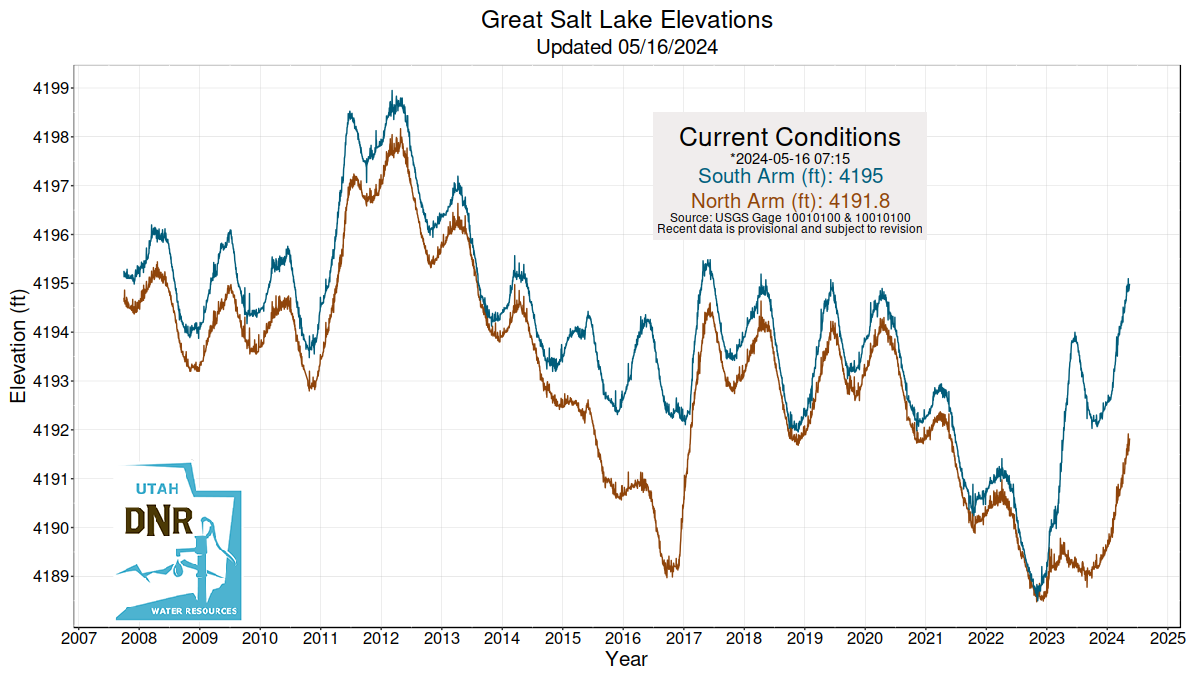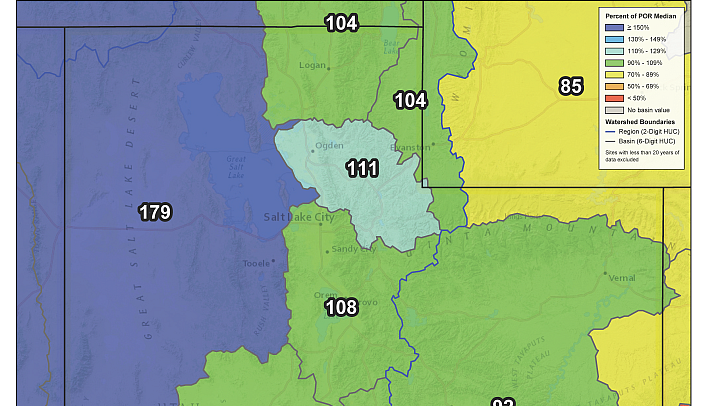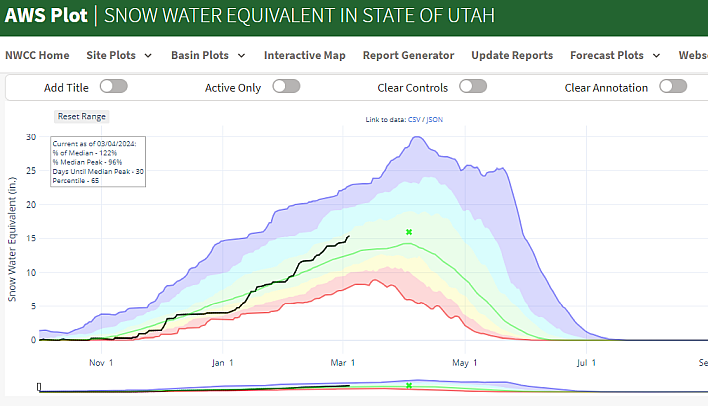The Great Salt Lake’s water level is influenced by precipitation, temperature, evaporation and runoff. It is a terminal basin, meaning it has no outlet, and once water arrives in the lake, it stays until it evaporates. So less water reaching the lake will, over time, ensure a smaller lake. Drought and warmer temperatures may also speed up the lake’s decline.
Runoff from the Uinta, Wasatch and Bear River ranges provides the primary water source for the lake. This runoff feeds the lake’s largest tributaries: the Bear River, the Jordan River and the Weber River. Combined, these sources supply nearly 70% of the lake’s water. The majority of the remaining water comes from direct precipitation on the lake, groundwater and intermittent streams in the West Desert.
The tools below present data that reflect current conditions impacting the lake.
Great Salt Lake Levels

Reservoir Levels

Soil Moisture
Soil moisture impacts runoff efficiency. Dry soils soak up water before it refills reservoirs and lakes.
Great Salt Lake Salinity Converter
This tool converts between concentration, percent salinity, and density. It uses the number of grams of salt in a liter (almost a quart) or the weight of salt compared to the weight of water and salt (salinity percent by weight), or how heavy the salt and water are (density) and can convert to the other data types.
Guidance
* Cannot be used to derive concentration from a refractometer percentage.


